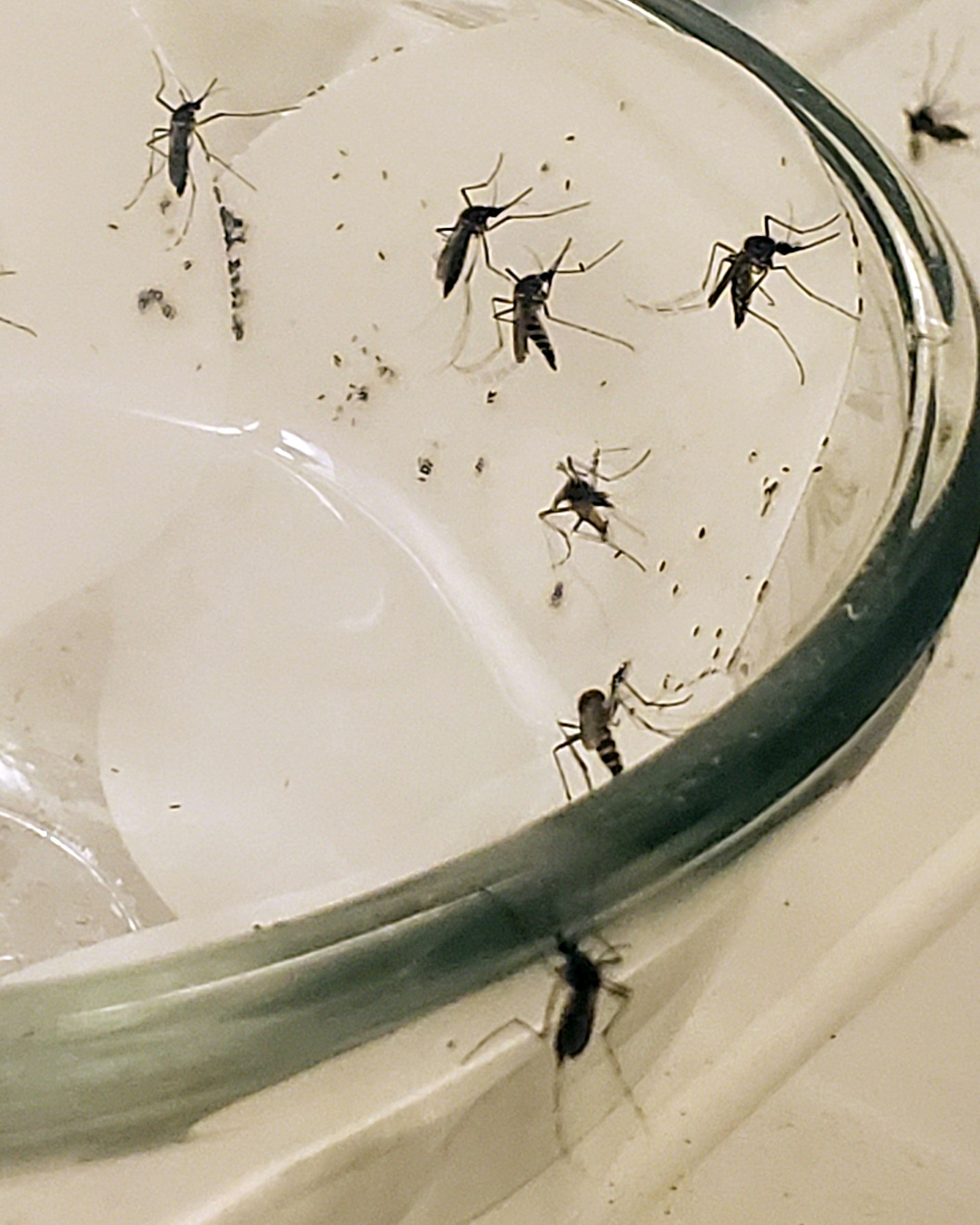|
Getting your Trinity Audio player ready...
|

Kaylee Marrero, Florida International University; Andre Luis da Costa da Silva, Florida International University, and Matthew DeGennaro, Florida International University
Aedes aegypti mosquitoes, one of the most common species in the U.S., love everything about humans. They love our body heat and odors, which enable them to find us. They love to feed on our blood to make their eggs mature. They even love all the standing water that we create. Uncovered containers, old tires and junk piles collect water and are perfect for breeding.
And with the advent of warm weather across the southern U.S., mosquito breeding season is already underway.
Given all the options that Aedes females have in urban areas, how do these cosmopolitan mosquitoes find the perfect site to lay their eggs? Scientists previously thought this was a solitary act, but now research shows that female Aedes aegypti mosquitoes – the main vector in the U.S. for diseases such as Zika, dengue, chikungunya and other viruses – can rely on one another for good reviews of breeding sites.
Our Laboratory of Tropical Genetics at Florida International University discovered a new behavior in which these mosquitoes work together to find suitable egg-laying sites. These findings, recently published in Communications Biology, show that mosquitoes regulate their own population density at breeding sites – an insight that could inform future mosquito control efforts.

Where and why female mosquitoes cluster
Scientists know that female mosquitoes can be picky when it comes to where they lay their eggs. Aedes aegypti look for human-made breeding sites with relatively clean water, such as birdbaths, tires or even water-filled trash. But given two equal choices, you might expect them to spread evenly between the two.
On the contrary, when we released females in a two-choice test where both breeding site options were equivalent, we repeatedly found more mosquitoes in one chamber than in the other. Furthermore, this occurred irrespective of where the preferred chamber was positioned, whether the mosquitoes could touch water or whether mosquito eggs were already present at the breeding sites.
Female mosquitoes clearly were following one another in small groups to one breeding site rather than another – a newly discovered behavior in Aedes aegypti that we call aggregation.

The insects evidently preferred not to lay their eggs alone. When we tested 30 mosquitoes in our trials, they chose one site over another by a 2-to-1 margin. However, this changed as the test population increased beyond 30 mosquitoes. When we tested 60 or 90 females, the aggregation disappeared.
This tells us that females can regulate their own density at breeding sites – a response that likely is a mechanism to limit larval competition.
Mosquitoes are smelling each other
Mosquitoes largely sense the world through smell, using three families of olfactory receptors. These receptors detect odors when females are choosing where to lay eggs. But how do females sense each other to regulate their densities at breeding sites?
We explored this question by first placing 15 mosquitoes at one of our two test breeding sites. Other females seeking a place to lay preferred the unoccupied site over the one that was already occupied, even though we had already observed that the mosquitoes preferred not to lay their eggs alone. Something was directing them away from the occupied breeding site; we speculated that it might be carbon dioxide, which is an important cue for mosquitoes in all stages of their life cycle.
When female mosquitoes are looking for a blood meal, they fly toward the odor of CO₂, which all vertebrate animals exhale and release through their skin. After feeding, they fly away from it, likely to avoid the risk of being killed by the host.
Mosquitoes also emit CO₂, and normally other mosquitoes can smell it, thanks to a receptor component called Gr3 in their olfactory organs. But when we released mutant females that lacked a functional Gr3 receptor to seek a place to lay eggs in our two-site test, we found that these insects, which could not detect CO₂, were willing to lay their eggs at preoccupied breeding sites. This suggested that normal mosquitoes might be avoiding the preoccupied laying site because they smelled CO₂ emitted by mosquitoes that were already there.
Female mosquitoes lay eggs on or near still bodies of water.
To confirm this, we offered two unoccupied breeding sites to females seeking a place to lay. However, we increased CO₂ levels around one of the sites to between 600 and 750 parts per million, compared with the normal level of about 450 to 500 ppm at the other site. We found that Aedes aegypti females avoided the unoccupied sites with elevated CO₂. This behavior appears designed to keep occupied breeding sites from becoming too crowded.
Overall, we found that two families of receptors play a role in the interactions between Aedes aegypti females when they seek breeding sites. Odorant receptors detect an unknown odor, which draws females toward a site; gustatory receptors detect CO₂, which deters females from breeding sites when the carbon dioxide level is high. The balance between these attractive and repellent odors will ultimately determine whether a female chooses or avoids a particular site.

Implications for mosquito control
Suppressing mosquito populations in urban areas using biolarvicides – pesticides made from live bacteria that are toxic to mosquito larvae – is a primary control strategy to limit the spread of deadly diseases such as West Nile virus and Zika virus. This is especially true for Aedes aegypti, which is the most common urban mosquito species that reproduces in artificial breeding sites that humans create. Other control tactics, such as spraying pesticides over large areas, target beneficial insects as well as mosquitoes and can be controversial.
Knowing that female Aedes aegypti use social cues to pick the best breeding grounds for their young and will move on from a breeding site when it becomes too crowded could lead to new control measures. Interrupting the female mosquito reproductive cycle would reduce the spread of mosquitoes and the spread of diseases that these insects carry.![]()
Kaylee Marrero, Ph.D. Student and Transdisiplinary Biomolecular and Biomedical Sciences Fellow, Florida International University; Andre Luis da Costa da Silva, Research Assistant Professor of Biological Sciences, Florida International University, and Matthew DeGennaro, Associate Professor of Biological Sciences, Florida International University
This article is republished from The Conversation under a Creative Commons license. Read the original article.






















































































